Born 14 Jul 1969.
Mexican electrical engineer and inventor who devised the AcceleGlove (2003), a glove-like device that translates sign language into written words for deaf individuals. He obtaining his masters degree in Mexico, where he was involved in building antenna control systems for what was to become the largest telescope in the world. Then he pursued his Ph.D. degree, specializing in Signals and Systems, on a Fulbright scholarship at Georgetown University in the U.S. There, in three years, he fulfilled his long-held desire to create a way for deaf people to translate sign language into text and sound by electronic means. The AcceleGlove uses accelerometer sensors to translate a wearer's hand movements sign language into signals read by a micro-controller computer on the user's arm. By 2009, the device had the ability to translate 300 alphabet letters and words of American sign language (ASL) into spoken words and sentences, in English or Spanish.«
Mexican electrical engineer and inventor who devised the AcceleGlove (2003), a glove-like device that translates sign language into written words for deaf individuals. He obtaining his masters degree in Mexico, where he was involved in building antenna control systems for what was to become the largest telescope in the world. Then he pursued his Ph.D. degree, specializing in Signals and Systems, on a Fulbright scholarship at Georgetown University in the U.S. There, in three years, he fulfilled his long-held desire to create a way for deaf people to translate sign language into text and sound by electronic means. The AcceleGlove uses accelerometer sensors to translate a wearer's hand movements sign language into signals read by a micro-controller computer on the user's arm. By 2009, the device had the ability to translate 300 alphabet letters and words of American sign language (ASL) into spoken words and sentences, in English or Spanish.«

Born 14 Jul 1945. quotes
Joel R. Primack is an American who specializes in the formation and evolution of galaxies; and the nature of the dark matter that makes up most of the matter in the universe. Primack helped create the “Standard Model” of particle physics. He is a Distinguished Professor of Physics and Astrophysics at the University of California, Santa Cruz, and Director of the University of California High Performance AstroComputing Center.
Joel R. Primack is an American who specializes in the formation and evolution of galaxies; and the nature of the dark matter that makes up most of the matter in the universe. Primack helped create the “Standard Model” of particle physics. He is a Distinguished Professor of Physics and Astrophysics at the University of California, Santa Cruz, and Director of the University of California High Performance AstroComputing Center.
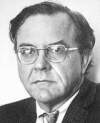
Born 14 Jul 1921; died 26 Sep 1996 at age 75.
English chemist who shared (with Ernst Fischer) the Nobel Prize for Chemistry in 1973 for “for their pioneering work, performed independently, on the chemistry of the organometallic, so called sandwich compounds.”
English chemist who shared (with Ernst Fischer) the Nobel Prize for Chemistry in 1973 for “for their pioneering work, performed independently, on the chemistry of the organometallic, so called sandwich compounds.”
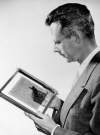
Born 14 Jul 1918.
Jay Wright Forrester is an American electrical engineer and management expert. In 1944-51 he supervised the building of the Whirlwind computer at the Massachusetts Institute of Technology, for which he invented the random-access magnetic core memory, the information-storage device employed in most digital computers. He also studied the application of computers to management problems, developing methods for computer simulation.
Jay Wright Forrester is an American electrical engineer and management expert. In 1944-51 he supervised the building of the Whirlwind computer at the Massachusetts Institute of Technology, for which he invented the random-access magnetic core memory, the information-storage device employed in most digital computers. He also studied the application of computers to management problems, developing methods for computer simulation.
Born 14 Jul 1874; died 31 Aug 1949 at age 75.
French chemist.
French chemist.

Born 14 Jul 1862; died 18 Jun 1945 at age 82. quotes
American geologist who was the first woman to receive a doctorate from Johns Hopkins University. Two years later she launched the geology department at Bryn Mawr. Bascom was the first woman to work as a geologist for the U.S. Geological Survey and to be made a fellow of the Geological Society of America. Bascom was an expert in crystallography, mineralogy, and petrography. She is known for inventing techniques that used microscopic analysis in the study of the oil-bearing rocks. She died at age 82. more
American geologist who was the first woman to receive a doctorate from Johns Hopkins University. Two years later she launched the geology department at Bryn Mawr. Bascom was the first woman to work as a geologist for the U.S. Geological Survey and to be made a fellow of the Geological Society of America. Bascom was an expert in crystallography, mineralogy, and petrography. She is known for inventing techniques that used microscopic analysis in the study of the oil-bearing rocks. She died at age 82. more

Born 14 Jul 1857; died 26 Mar 1937 at age 79.
Frederick Louis Maytag was an American industrialist who with three other men in 1893 started a farm implement business in Newton, Iowa. They made threshing machine, band-cutter and self-feeder attachments invented by one of the founders, George Parsons. By 1902, the firm was the world's largest manufacturer of threshing machine feeders. However, the company later moved into the production of washing machines due to the seasonal nature of the farm industry. Its first washing machine was the Parson's Pastime hand-powered wood tub (1907-08). By 1909, Maytag took charge of his own industry, the Maytag Company to maintain his control of quality in the planning and production of washing machines.«
Frederick Louis Maytag was an American industrialist who with three other men in 1893 started a farm implement business in Newton, Iowa. They made threshing machine, band-cutter and self-feeder attachments invented by one of the founders, George Parsons. By 1902, the firm was the world's largest manufacturer of threshing machine feeders. However, the company later moved into the production of washing machines due to the seasonal nature of the farm industry. Its first washing machine was the Parson's Pastime hand-powered wood tub (1907-08). By 1909, Maytag took charge of his own industry, the Maytag Company to maintain his control of quality in the planning and production of washing machines.«

Born 14 Jul 1842; died 21 Dec 1909 at age 67.
American chemical engineer who was an early supporter of standardisation and material testing in industry. From 1875, as a chemist for the Pennsylvania Railroad Company, he researched the metallurgy of steel rail tracks because their breakage was a serious hazard at that time. When he discovered enormous variation in the quality of steel and published his results (1878), the manufacturers were at first uncooperative. However, Dudley insisted on continuing testing, and rigorous standards for fuels, lubricants, paints, lighting devices and various mechanical parts of locomotives and rolling stock. He co-founded (1898) the American Society for Testing and Materials, and was its president from 1902 until his death.«
American chemical engineer who was an early supporter of standardisation and material testing in industry. From 1875, as a chemist for the Pennsylvania Railroad Company, he researched the metallurgy of steel rail tracks because their breakage was a serious hazard at that time. When he discovered enormous variation in the quality of steel and published his results (1878), the manufacturers were at first uncooperative. However, Dudley insisted on continuing testing, and rigorous standards for fuels, lubricants, paints, lighting devices and various mechanical parts of locomotives and rolling stock. He co-founded (1898) the American Society for Testing and Materials, and was its president from 1902 until his death.«
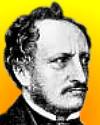
1857
Born 14 Jul 1801; died 28 Apr 1858 at age 56. quotes
German physiologist and anatomist who was one of the greatest of 19th century. He and Magendie are credited for establishing the science of physiology in its modern form. His famous discovery of the principle of specific nerve energies (1826) when he was able to show that sensory nerves impulses, however stimulated, will be interpreted in the same way. For example, any stimulation of the optic nerve results in a sensation of light, whether light is really involved or not. His major work, Handbuch der Physiologie des Menschen für Vorlesungen, (Elements of Physiology, in 2 vols.) was published in 1833-40. His broad pathology studies included hermaphroditism, embryology, echinoderms, fishes, lmph, chyle, the blood and the voice.«
German physiologist and anatomist who was one of the greatest of 19th century. He and Magendie are credited for establishing the science of physiology in its modern form. His famous discovery of the principle of specific nerve energies (1826) when he was able to show that sensory nerves impulses, however stimulated, will be interpreted in the same way. For example, any stimulation of the optic nerve results in a sensation of light, whether light is really involved or not. His major work, Handbuch der Physiologie des Menschen für Vorlesungen, (Elements of Physiology, in 2 vols.) was published in 1833-40. His broad pathology studies included hermaphroditism, embryology, echinoderms, fishes, lmph, chyle, the blood and the voice.«

Born 14 Jul 1800; died 10 Apr 1884 at age 83. quotes
French chemist who was a pioneer in organic chemistry. Propounding new theories of relationships between organic compounds, he laid the foundations for Kekulé's later work. In 1823, working with Jean-Louis Prévost, Dumas showed that urea is transported by the blood. Together in 1824-25, they repeated Lazarro Spallanzani's filtration experiments, thus confirming the necessity of spermatozoa for fertilization, and described cleavage in a frog egg. In 1833, with the determination of nitrogen in organic compounds, he established quantitative organic analysis. Two decades ahead of Mendeléev, in 1851, he sought to establish an order among elements by their properties. In 1848 he moved into politics, becoming Master of the Mint in 1868.
French chemist who was a pioneer in organic chemistry. Propounding new theories of relationships between organic compounds, he laid the foundations for Kekulé's later work. In 1823, working with Jean-Louis Prévost, Dumas showed that urea is transported by the blood. Together in 1824-25, they repeated Lazarro Spallanzani's filtration experiments, thus confirming the necessity of spermatozoa for fertilization, and described cleavage in a frog egg. In 1833, with the determination of nitrogen in organic compounds, he established quantitative organic analysis. Two decades ahead of Mendeléev, in 1851, he sought to establish an order among elements by their properties. In 1848 he moved into politics, becoming Master of the Mint in 1868.

(EB)
Born 14 Jul 1797; died 8 Mar 1877 at age 79.
A British naturalist and paleontologist, Bowerbank at 15 began his initial career was at his father's whisky distillery "Bowerbank & Sons". Educated by the famous Dr. Kelly, he took an early interest in science (mainly microscopy, entomology, palaeontology and the study of sponges). He has been most remembered for A Monograph of the British Spongidae (1864-82). Bowerbank also pursued mathematics, botany, astronomy and paleontology. He was the honorary secretary and president of the Paleontological Society, and was one of the founding members of the Royal Microscopical Society and of the Zoological Society.
A British naturalist and paleontologist, Bowerbank at 15 began his initial career was at his father's whisky distillery "Bowerbank & Sons". Educated by the famous Dr. Kelly, he took an early interest in science (mainly microscopy, entomology, palaeontology and the study of sponges). He has been most remembered for A Monograph of the British Spongidae (1864-82). Bowerbank also pursued mathematics, botany, astronomy and paleontology. He was the honorary secretary and president of the Paleontological Society, and was one of the founding members of the Royal Microscopical Society and of the Zoological Society.
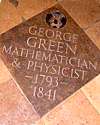
Memorial stone
Born 14 Jul 1793; died 31 Mar 1841 at age 47. quotes
English mathematician who was the first to develop a mathematical theory of electricity and magnetism. Astonishingly, he followed his father's trade as a baker and miller. He not only was self-taught as a mathematician, but in Mar 1828 he privately published a few dozen copies of a sophisticated work, An Essay on the Application of Mathematical Analysis to the Theories of Electricity and Magnetism. At first it drew little attention, but by age 40, he went to study at Cambridge (Oct 1833). Eventually his Essay became known to Lord Kelvin (William Thomson) who understood it and built upon it, as well as James Clerk Maxwell. From obscure origins, Green had initiated modern mathematical theories of electricity.«
English mathematician who was the first to develop a mathematical theory of electricity and magnetism. Astonishingly, he followed his father's trade as a baker and miller. He not only was self-taught as a mathematician, but in Mar 1828 he privately published a few dozen copies of a sophisticated work, An Essay on the Application of Mathematical Analysis to the Theories of Electricity and Magnetism. At first it drew little attention, but by age 40, he went to study at Cambridge (Oct 1833). Eventually his Essay became known to Lord Kelvin (William Thomson) who understood it and built upon it, as well as James Clerk Maxwell. From obscure origins, Green had initiated modern mathematical theories of electricity.«

Born 14 Jul 1762; died 14 Feb 1845 at age 82.
French educator who reformed the French educational system during the French Revolution. He was a respected scientist of the time, and observed the development of the telegraph by Ignace Chappe. On 2 Jul 1793, Joseph Lakanal filed a report to the legislature on Chappe's behalf, requesting officially that the mayors of the three communities where the first telegraphs were being erected would be ordered to take measures for the protection of the telegraphs. On 25 Feb 1795, Joseph Lakanal defined on behalf of the French Revolution an “educational utopia” which would “put an end to inequalities of development that affected a citizen's capacities for judgment.”
French educator who reformed the French educational system during the French Revolution. He was a respected scientist of the time, and observed the development of the telegraph by Ignace Chappe. On 2 Jul 1793, Joseph Lakanal filed a report to the legislature on Chappe's behalf, requesting officially that the mayors of the three communities where the first telegraphs were being erected would be ordered to take measures for the protection of the telegraphs. On 25 Feb 1795, Joseph Lakanal defined on behalf of the French Revolution an “educational utopia” which would “put an end to inequalities of development that affected a citizen's capacities for judgment.”

Born 14 Jul 1610; died 24 May 1670 at age 59.
Ferdinand II de Medici, Grand Duke of Tuscany was an Italian monarch and science patronwas Grand Duke from 1621. His eager and liberal patronage of men of science included Nicolaus Steno and Galileo, and he helped suppost the foundation of the Accademia del Cimento (1657). He also devised a sealed thermometer which, unlike Galileo's open one, was not affected by changes in air pressure. It was to him that Galileo dedicated the lens with which he had discovered the satellites of Jupiter and he also made him a gift of the armed lodestone. J. W. Blaeu dedicated to him one of his globes of the fifth type. Ferdinand II was also a patron of Robert Dudley.
Ferdinand II de Medici, Grand Duke of Tuscany was an Italian monarch and science patronwas Grand Duke from 1621. His eager and liberal patronage of men of science included Nicolaus Steno and Galileo, and he helped suppost the foundation of the Accademia del Cimento (1657). He also devised a sealed thermometer which, unlike Galileo's open one, was not affected by changes in air pressure. It was to him that Galileo dedicated the lens with which he had discovered the satellites of Jupiter and he also made him a gift of the armed lodestone. J. W. Blaeu dedicated to him one of his globes of the fifth type. Ferdinand II was also a patron of Robert Dudley.

Died 14 Jul 2017 at age 40 (born 3 May 1977). quotes
Iranian mathematician who was the first woman ever to be awarded (2014) the most prestigious Fields Medal,“for her outstanding contributions to the dynamics and geometry of Riemann surfaces and their moduli spaces.” The obituarist in Nature called these contributions “monumental” by “one of the greatest mathematicians of her generation” and “her talent was rare.” In school, she twice won gold medals for Iran in the International Mathematical Olympiad. After completing her bachelor's degree in Tehran, she moved in 1999 to earn a Ph.D. at Harvard University (2004). She became a professor at Princeton (2004-08) followed by Stanford University (2007-17). Sadly, cancer cut her life short at the age of 40.«
Iranian mathematician who was the first woman ever to be awarded (2014) the most prestigious Fields Medal,“for her outstanding contributions to the dynamics and geometry of Riemann surfaces and their moduli spaces.” The obituarist in Nature called these contributions “monumental” by “one of the greatest mathematicians of her generation” and “her talent was rare.” In school, she twice won gold medals for Iran in the International Mathematical Olympiad. After completing her bachelor's degree in Tehran, she moved in 1999 to earn a Ph.D. at Harvard University (2004). She became a professor at Princeton (2004-08) followed by Stanford University (2007-17). Sadly, cancer cut her life short at the age of 40.«
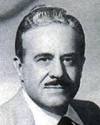
Died 14 Jul 1986 at age 92 (born 5 Nov 1893). quotes
French-born American inventor and design engineer, known as the “Father of Streamlining.” Famous examples of his designs include the Studebaker1947 Starlight Coupe, the 1953 Starliner Coupe and the 1961 Avanti - designs that generated a public interest and acceptance far out of proportion to the company's relative size in the industry; the 1947 line of Hallicrafter radio receivers that conveyed a crisp precision far ahead of their time; the 1929 Gestetner duplicating machine, the 1934 Sears Coldspot Refrigerator and the S-1 Steam locomotive for the Pennsylvania Railroad - all landmark designs influential in establishing higher design standards in their respective design areas. He also designed such smaller items as toothbrushes, razors, furniture and the Coca Cola Bottle.
French-born American inventor and design engineer, known as the “Father of Streamlining.” Famous examples of his designs include the Studebaker1947 Starlight Coupe, the 1953 Starliner Coupe and the 1961 Avanti - designs that generated a public interest and acceptance far out of proportion to the company's relative size in the industry; the 1947 line of Hallicrafter radio receivers that conveyed a crisp precision far ahead of their time; the 1929 Gestetner duplicating machine, the 1934 Sears Coldspot Refrigerator and the S-1 Steam locomotive for the Pennsylvania Railroad - all landmark designs influential in establishing higher design standards in their respective design areas. He also designed such smaller items as toothbrushes, razors, furniture and the Coca Cola Bottle.


Died 14 Jul 1960 at age 85 (born 27 Apr 1875).
(6th duke) (Louis-César-Victor-) Maurice de Broglie was a French physicist who made many contributions to the study of X rays. While in the navy (1895-1908), he first distinguished himself by installing the first French shipboard wireless. From 1912, his chief interest was X-ray spectroscopy. His “method of the rotating crystal” was an application of Bragg's “focussing effect” to eliminate spurious spectral lines. De Broglie discovered the third L absorption edge (1916), which led to the exploration of “corpuscular spectra.” During 1921-22, he worked with his brother Louis to refine Bohr's specification of the substructure of the various atomic shells. He also did pioneer work in nuclear physics and cosmic radiation. more
(6th duke) (Louis-César-Victor-) Maurice de Broglie was a French physicist who made many contributions to the study of X rays. While in the navy (1895-1908), he first distinguished himself by installing the first French shipboard wireless. From 1912, his chief interest was X-ray spectroscopy. His “method of the rotating crystal” was an application of Bragg's “focussing effect” to eliminate spurious spectral lines. De Broglie discovered the third L absorption edge (1916), which led to the exploration of “corpuscular spectra.” During 1921-22, he worked with his brother Louis to refine Bohr's specification of the substructure of the various atomic shells. He also did pioneer work in nuclear physics and cosmic radiation. more

Died 14 Jul 1953 at age 70 (born 19 Apr 1883). quotes
Austrian-American mathematician and aerodynamicist who notably advanced statistics and the theory of probability. Von Mises' contributions range widely, also including fluid mechanics, aerodynamics, and aeronautics. His early work centred on aerodynamics. He investigated turbulence, making fundamental advances in boundary-layer-flow theory and airfoil design. Much of his work involved numerical methods and this led him to develop new techniques in numerical analysis. He introduced a stress tensor which was used in the study of the strength of materials.Von Mises' primary work in statistics concerned the theory of measure and applied mathematics. His most famous, yet controversial, work was in probability theory.
Austrian-American mathematician and aerodynamicist who notably advanced statistics and the theory of probability. Von Mises' contributions range widely, also including fluid mechanics, aerodynamics, and aeronautics. His early work centred on aerodynamics. He investigated turbulence, making fundamental advances in boundary-layer-flow theory and airfoil design. Much of his work involved numerical methods and this led him to develop new techniques in numerical analysis. He introduced a stress tensor which was used in the study of the strength of materials.Von Mises' primary work in statistics concerned the theory of measure and applied mathematics. His most famous, yet controversial, work was in probability theory.
Theory of Flight, by Richard von Mises. - book suggestion.
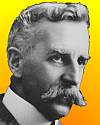
Died 14 Jul 1929 at age 69 (born 23 Jun 1860).
English biologist and anthropologist, the first trained and experienced scientist to enter the field of Australian anthropology. He made several expeditions to central and northern Australia (1894-1926), making representations on Aboriginal welfare to the Australian parliament in 1913. In 1912 he collected more than 200 bark paintings which he presented to the National Museum of Victoria, together with his ethnographic collection, in 1917. Spencer's interpretation of Aranda society came under criticism at the time and his paternalistic conclusions are unacceptable to later scholars. His writings and pictorial records constitute, however, a unique and valuable archive of Aboriginal society. He returned to England in 1927.
English biologist and anthropologist, the first trained and experienced scientist to enter the field of Australian anthropology. He made several expeditions to central and northern Australia (1894-1926), making representations on Aboriginal welfare to the Australian parliament in 1913. In 1912 he collected more than 200 bark paintings which he presented to the National Museum of Victoria, together with his ethnographic collection, in 1917. Spencer's interpretation of Aranda society came under criticism at the time and his paternalistic conclusions are unacceptable to later scholars. His writings and pictorial records constitute, however, a unique and valuable archive of Aboriginal society. He returned to England in 1927.

Died 14 Jul 1926 at age 81 (born 30 Dec 1844).
Charles Albert Coffin was an American industrialist who was a leader in the electrical industry. In 1892, he merged his firm, the Thomas-Houston Company, with the Edison Electric Company to create the General Electric Company. He was first GE president, and then its board chairman (1913-1922). He had little technical knowledge about electricity himself, but he had a keen ability for organization and brought to the company the best technical men. In 1901, he supported the establishment of a research laboratory responsible for both applications to electrical development and pure science. In his years as head of the firm, GE experienced substantial growth, and became one of the most important companies to the economy of the U.S. During WW I, Coffin created the War Relief Clearing House and worked for the Red Cross.«
Charles Albert Coffin was an American industrialist who was a leader in the electrical industry. In 1892, he merged his firm, the Thomas-Houston Company, with the Edison Electric Company to create the General Electric Company. He was first GE president, and then its board chairman (1913-1922). He had little technical knowledge about electricity himself, but he had a keen ability for organization and brought to the company the best technical men. In 1901, he supported the establishment of a research laboratory responsible for both applications to electrical development and pure science. In his years as head of the firm, GE experienced substantial growth, and became one of the most important companies to the economy of the U.S. During WW I, Coffin created the War Relief Clearing House and worked for the Red Cross.«

Died 14 Jul 1907 at age 69 (born 12 Mar 1838). quotes
Sir William Henry Perkin was an English chemist and inventor who, in his youth, was enthused about chemistry by attending public lectures by Michael Faraday. While experimenting to synthesize quinine from a coal tar chemical, Perkins mixed aniline and sodium dichromate and unexpectedly found a dense colour - he named as aniline purple - which he extracted with alcohol. He had discovered the first artificial dye. Textiles of his era were coloured from natural sources; his was a valuable alternative. At the age of 18, he patented the dye. His father invested in his efforts to manufacture the dye. It went on sale in 1857, and it became popular in France. By age 23 he was fathering a new synthetic organic chemical industry. He continued synthesis research. He was knighted in 1906.
Sir William Henry Perkin was an English chemist and inventor who, in his youth, was enthused about chemistry by attending public lectures by Michael Faraday. While experimenting to synthesize quinine from a coal tar chemical, Perkins mixed aniline and sodium dichromate and unexpectedly found a dense colour - he named as aniline purple - which he extracted with alcohol. He had discovered the first artificial dye. Textiles of his era were coloured from natural sources; his was a valuable alternative. At the age of 18, he patented the dye. His father invested in his efforts to manufacture the dye. It went on sale in 1857, and it became popular in France. By age 23 he was fathering a new synthetic organic chemical industry. He continued synthesis research. He was knighted in 1906.
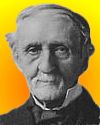
Died 14 Jul 1899 at age 96 (born 15 May 1803).
British engineer whose life-work was constructing irrigation, navigation canals and dams for water storage in Southern India, saving thousands from famine and promoting local economy. He joined the Madras engineers in 1819, fought in the first Burmese war (1824-26) and began his ambitious irrigation project (1826-62). He built dams on several rivers, transforming the drought-stricken Tanjore district into the richest part of the state of Madras. His ambitious masterplan was not completed in his lifetime, but his ideas anticipated projects that were subsequently taken up. In the present time, India’s goal of a National Water Grid confronts the problem of increasingly scarce water. Cotton founded the Indian school of hydraulic engineering.«
British engineer whose life-work was constructing irrigation, navigation canals and dams for water storage in Southern India, saving thousands from famine and promoting local economy. He joined the Madras engineers in 1819, fought in the first Burmese war (1824-26) and began his ambitious irrigation project (1826-62). He built dams on several rivers, transforming the drought-stricken Tanjore district into the richest part of the state of Madras. His ambitious masterplan was not completed in his lifetime, but his ideas anticipated projects that were subsequently taken up. In the present time, India’s goal of a National Water Grid confronts the problem of increasingly scarce water. Cotton founded the Indian school of hydraulic engineering.«
General Sir Arthur Cotton - His Life and Work, by E.R. Hope. - book suggestion.

Died 14 Jul 1887 at age 75 (born 26 Apr 1812).
German manufacturer of steel and armaments who was known as “The Cannon King.” At an early age, in 1826, he inherited his father's small cast-steel works at Essen, which he expanded by 1843 to 100 workers making steel springs and machine parts. In 1859, he won a Prussian government contract to make 312 cannon. Developing this line of business, he became the largest steel maker in Europe. In 1862, he began making steel with the Bessemer process. His cannon were used in the Franco-Prussian War of 1870. After this, he acquired control of the supply of German coal and Spanish iron-ore. His artillery business grew to 21,000 employees. His descendants continued the business and armed the Germans in WW II.«
German manufacturer of steel and armaments who was known as “The Cannon King.” At an early age, in 1826, he inherited his father's small cast-steel works at Essen, which he expanded by 1843 to 100 workers making steel springs and machine parts. In 1859, he won a Prussian government contract to make 312 cannon. Developing this line of business, he became the largest steel maker in Europe. In 1862, he began making steel with the Bessemer process. His cannon were used in the Franco-Prussian War of 1870. After this, he acquired control of the supply of German coal and Spanish iron-ore. His artillery business grew to 21,000 employees. His descendants continued the business and armed the Germans in WW II.«
The Arms of Krupp: The Rise and Fall of the Industrial Dynasty that Armed Germany at War, by William Manchester. - book suggestion.

Died 14 Jul 1827 at age 39 (born 10 May 1788). quotes
French physicist who first investigated the effect of interference of light, with results known as Fresnel fringes. This decisive work, together with further experiments with polarized light, supported Thomas Young's wave theory of light. Fresnel advanced the wave theory by identifying light as transverse waves rather than the longitudinal waves previously assumed by Young and Christiaan Huygens. His pioneering work in optics included showing that white light is composed of a spectrum of innumerable wavelengths ranging from red to shorter violet wavelenths. In 1819, he improved the optical system of lighthouses by replacing metal reflectors with revolutionary stepped lenses of his design.«
French physicist who first investigated the effect of interference of light, with results known as Fresnel fringes. This decisive work, together with further experiments with polarized light, supported Thomas Young's wave theory of light. Fresnel advanced the wave theory by identifying light as transverse waves rather than the longitudinal waves previously assumed by Young and Christiaan Huygens. His pioneering work in optics included showing that white light is composed of a spectrum of innumerable wavelengths ranging from red to shorter violet wavelenths. In 1819, he improved the optical system of lighthouses by replacing metal reflectors with revolutionary stepped lenses of his design.«

In 2013, the world's last telegram was sent in India. It was the last major country to shut down telegram service. India's 163-year-old telegram service was no longer needed, as e-mail and texting had replaced bicycle telegram messengers. In Great Britain, telegram delivery ceased in 2008, while the U.S., Western Union's dwindling service was terminated 27 Jan 2006. The first formal telegram was sent by Samuel Morse in Washington to his business partner Alfred Vail in Baltimore, on 24 May 1844. Seeking funding, he demonstrated to Congress the power of telegraphy through wires connecting cities with the message, “What hath God wrought.” In time, wires were strung across the U.S. and other countries, which eventually were connected by a Transatlantic cable under the ocean and more submarine cables.«
The Victorian Internet: The Remarkable Story of the Telegraph, by Tom Standage. - book suggestion.

In 1965, the Mariner 4 satellite sent a transmission of the first close-up photograph of Mars. It consisting of 8.3 dots per second of varying degrees of darkness. The transmission lasted for 8.5 hours and depicted the regions on Mars known as Cebrenia, Arcadia, and Amazonis. The satellite was 134 million miles away from earth and 10,500 miles from Mars. The 574-pound spacecraft had been launched at 9:22am on 28 Nov 1964, from Cape Canaveral, FL, by a two-stage Atlas-Agena D rocket. In addition to its camera with digital tape recorder (about 20 pictures), it carried instruments for studying cosmic dust, solar plasma, trapped radiation, cosmic rays, magnetic fields, radio occultation and celestial mechanics.


Typical hedgerow of the bocage.

In 1943, George Washington Carver was honored by U.S. President Franklin Delano Roosevelt dedicating $30,000 for a National Monument to his accomplishments. The area of Carver's childhood near Diamond Grove, in southwest Missouri has been preserved as a park, with a bust of the agricultural researcher, instructor, and chemical investigator. This park was the first designated national monument to an African American in the United States. In 1850-65, Diamond was a typical "crossroads village" near a diamond-shaped grove of trees not far from the Carver farm in Newton County. Also called Diamond Grove, it consisted of a general store, a combination blacksmith shop and post office, and a church that served as a schoolhouse during the week.

In 1933, a sterilization law was passed in Nazi Germany, known as Gesetz zur Verhütung erbkranken Nachwuchses (Law for the Prevention of Genetically Diseased Offspring), to be effective 1 Jan 1934. Any German was a target if suffering from any of the following mental conditions that were expected to be hereditary: congenital mental deficiency, schizophrenia or manic-depressive insanity. Other expected herediatry conditions included: epilepsy, Huntington’s chorea, blindness, deafness, any severe hereditary deformity or even severe alcoholism. Within a few years, up to an estimated 400,000 Germans were involuntarily sterilized in pursuit of this national goal of “racial hygiene,” to eliminate handicapped descendants. Most operations, often by female tubal ligations or male vasectomies, were done in 1934-37.[Image: Propaganda poster showing the financial burden to society of hereditary disabilities. Text translates as “You are sharing the load! A genetically Ill Individual Costs Approximately 50,000 Reichmarks by the Age of Sixty.”]
Racial Hygiene: Medicine Under the Nazis, by Robert Proctor. - book suggestion.
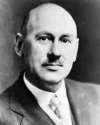
In 1914, the first U.S. patent for a liquid-fueled rocket design, titled “Rocket Apparatus” was granted to Dr Robert Goddard, (U.S. No. 1,103,503). It described a combustion chamber, with expander nozzle, into which liquid fuels are pumped. At age 31, this was his second rocket patent. A week earlier, on 7 Jul 1914, his first patent, also for a “Rocket Apparatus” was issued. (U.S. No. 1,102,653) which described the multi-stage rocket concept. On 16 Mar 1926, his test launch, the first ever of a liquid-fuelled rocket, managed to propel a 10-ft long projectile to a height of 41-ft (12.5 m). Its 2.5 second flight covered a distance of 184-ft at an average speed of 60-mph. The fuel was a combination of liquid oxygen and gasoline.«
Rocket Man: Robert H. Goddard and the Birth of the Space Age, by David A. Clary. - book suggestion.

In 1891, the first US patent was issued for pure corkboard to John T. Smith of Brooklyn, NY. Manufacture was begun in Brooklyn in 1894 by Stone and Duryea. Cork covering was produced first, followed by the manufacture of pure corkboard. (No. 456,068) He described a process whereby to subject "cork in a more or less fine state in a closed vessel to heat, so as to melt and volatilize the resinous matter contained in it, permitting some of the vapor to escape from the vessel and cementing the cork particles together by the condensation of the remaining vaporized resinous matter." The patent commented on the value of the product in life-preservers for being less dense and more waterproof after this treatment.

In 1868, Alvin J. Fellows of New Haven, Connecticut recieved the first U.S. patent for a spring tape measure. The tape measure was enclosed in a circular case with a spring click lock to hold the tape at any desired point. (No. 79,965). Earlier, a machine to print ribbon for the supple sewing tape measures had already been patented on 3 Sep 1847, after four years of research by the French fashion designer, Lavigne. Further, however, Sheffield, England claims to be not just the home of stainless steel, but also where the spring tape measure was invented.
more

In 1867, Alfred Nobel demonstrated dynamite for the first time at a quarry in Redhill, Surrey. In 1866 Nobel produced what he believed was a safe and manageable form of nitroglycerin called dynamite. He established his own factory to produce it but in 1864 an explosion at the plant killed Nobel's younger brother and four other workers. Deeply shocked by this event, he now worked on a safer explosive and in 1875 came up with gelignite. Other inventions followed including ballistite, a form of smokeless power, artificial gutta-percha and a mild steel for armour-plating.

In 1853, the first US World's Fair opened in New York.Born of a desire to recreate and, if possible, surpass the British Crystal Palace exhibition of 1851, it was promoted by New York businessmen, including Horace Greeley. Modeled after London's impressive structure, the iron and glass New York Crystal Palace was an octagonal form, with Greek-cross superstructure abutting a round dome at the center and tall minarets at the outer angles. The building housed 4,854 exhibitors, of whom about half came from 23 foreign nations. The roof of the ill-fated Crystal Palace leaked and heavy rains ruined exhibits and soaked visitors. Delays, poor management and dwindling attendance caused the exposition to close with a substantial loss.

In 1850, the first public demonstration of ice made by refrigeration in the U.S. took place during a dinner at the Mansion House, Apalachicola, Dr. John Gorrie produced blocks of ice the size of bricks. He installed his system in the U.S. Marine Hospital in Apalachicola. He obtained the first mechanical freezer patent on 6 May 1851, for an "improvement in the process for the artificial production of ice."

In 1791, chemist Joseph Priestley's laboratory, home and library in Birmingham were burned to destruction by a mob of people angry at his support of the French Revolution. Within a few years, on 7 Apr 1794, he forever left England and travelled to the United States. Priestley discovered oxygen nearly 20 years earlier, on 1 Aug 1774.
Joseph Priestley: Adventurer in Science and Champion of Truth, by F W. Gibbs. - book suggestion.




